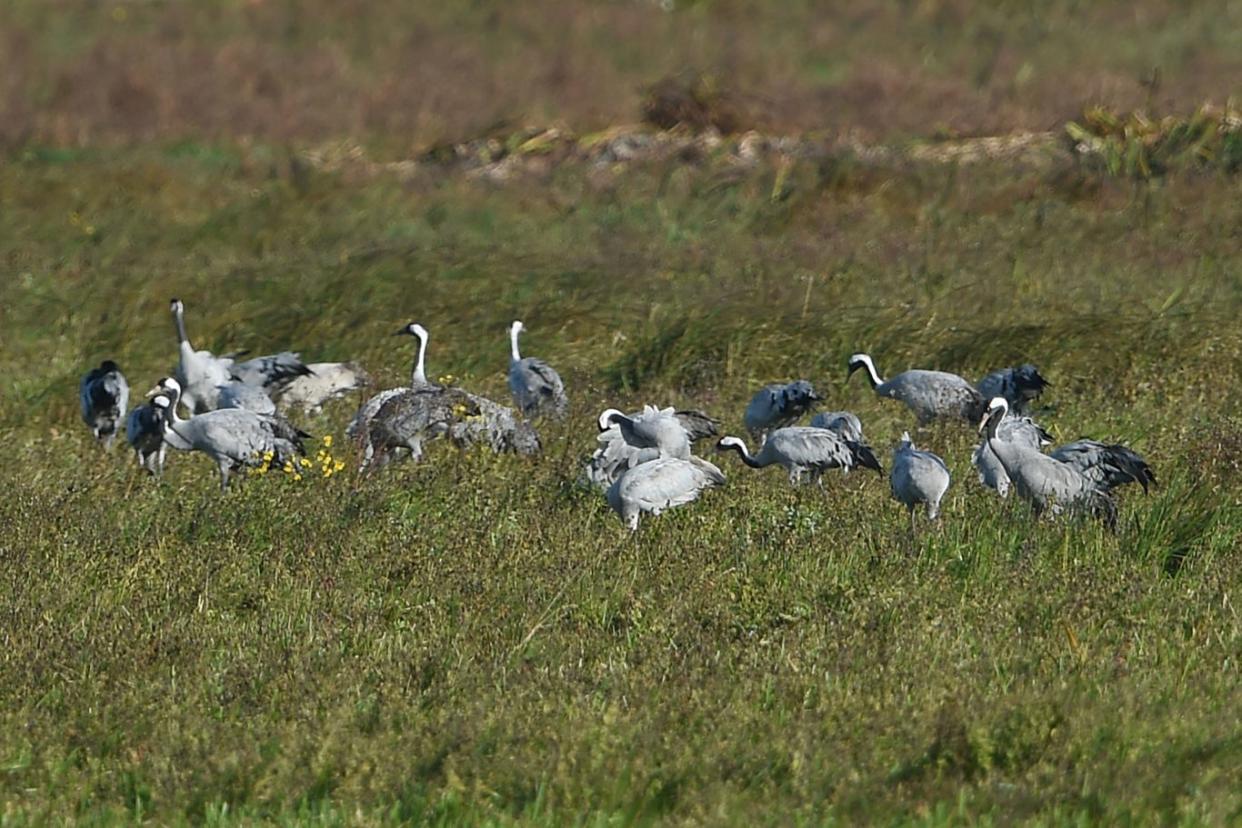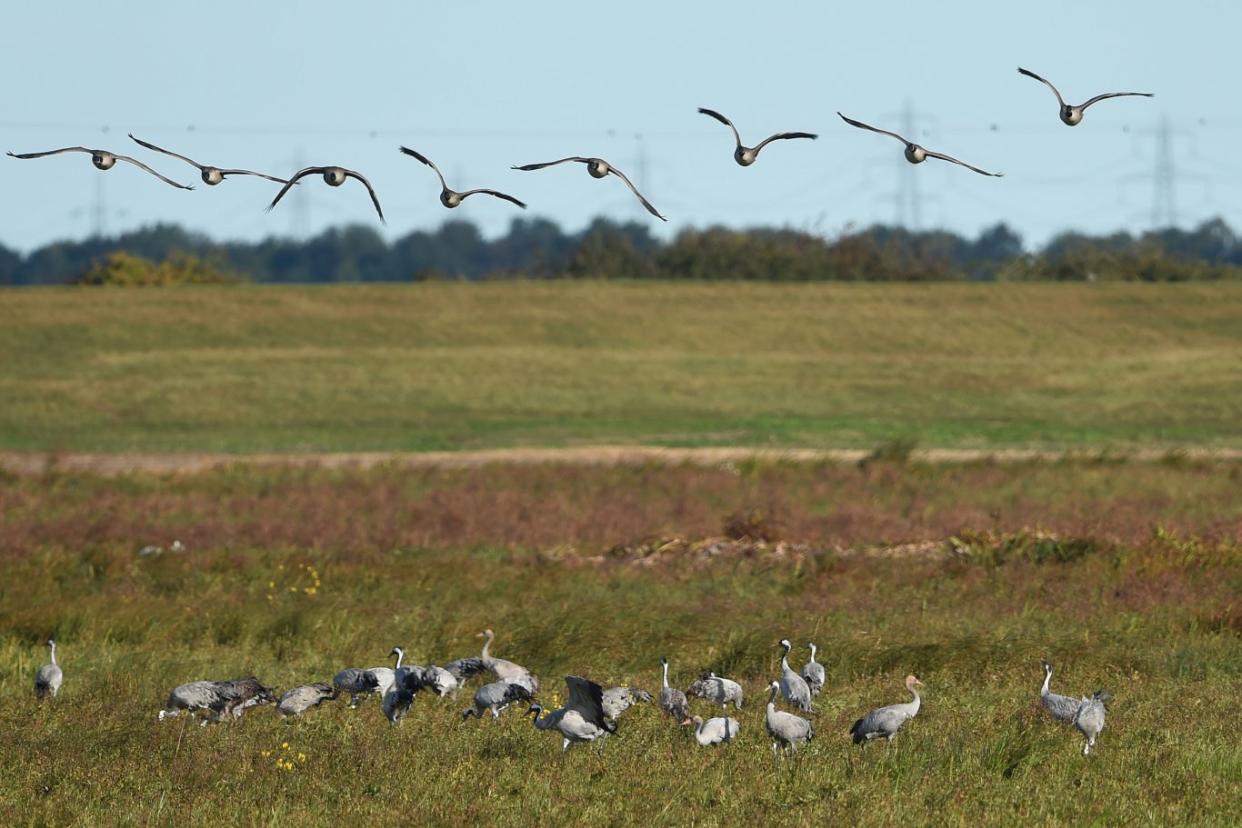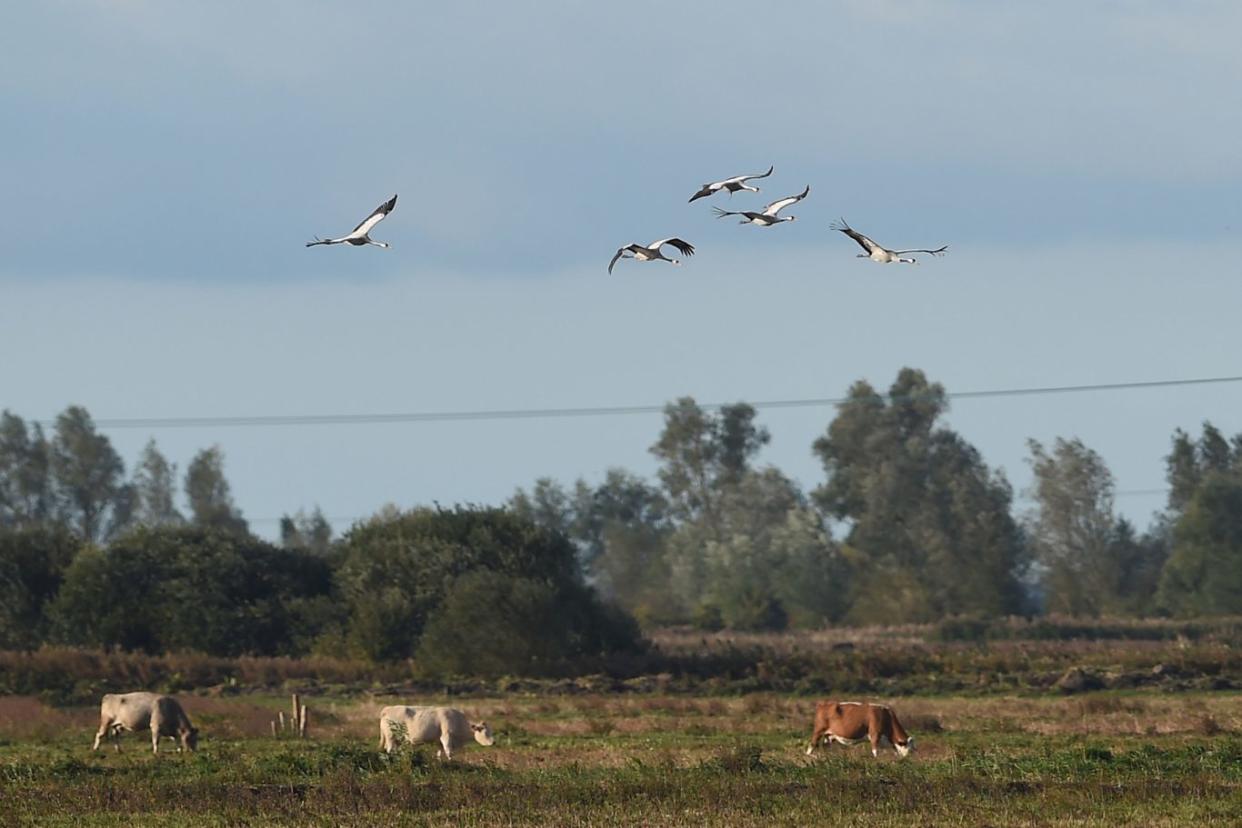Rare cranes return to nature reserve in greater numbers

A flock of rare cranes has returned to a nature reserve in increased numbers in a conservation success.
The Welney wetland nature reserve, on the border of Norfolk and Cambridgeshire, counted 21 cranes in 2016 and that has risen to 33 this year.
See also: Pictures: Britain's exotic wildlife
See also: Puffins and curlews join endangered list of British birds

Some of the 33 cranes that have made the Wildfowl & Wetlands Trust centre at Welney in Norfolk their home in recent days (Joe Giddens/PA Wire)
The long-legged grey birds breed at private sites in the Cambridgeshire Fens then migrate to Welney around September to forage.
Emma Brand, of the Wildfowl and Wetlands Trust (WWT) Welney Wetland Centre, said: "They're all able to fly and they go out on the washes.
"They're picking up seeds, small insects, they particularly like some of the washes the cattle have been in. They've also got the maize fields. It's quite a spectacle to see them now in these bigger numbers."

The cranes, once extinct in the UK, have all flown to the wetland habitat rather than being part of any hand-reared project (Joe Giddens/PA Wire)
It is warm enough for cranes to remain in the UK through the winter, but they are expected to leave Welney by late October for other nearby habitats as water levels rise and it gets busier with swans and ducks.
Cranes went extinct in the UK in the 1600s, but some flew in from the continent and populations are slowly rising.
There is a tiny breeding population in eastern England, with around 40 to 50 in the Fens and a further 40 to 50 on the Norfolk Broads.
There is also a population on the Somerset Levels, where they were introduced as part of a conservation project.
29 cranes just flew from the fields beyond Lady Fen onto the reserve, they look to have landed near Lyle or Friends hide #rbnNFKpic.twitter.com/fDkfFEO6Ly
-- WWT Welney (@WWTWelney) September 26, 2017
"We've got a really precarious situation in the UK," said Ms Brand. "They're in increase at the moment but in small numbers.
"It would be lovely to see them more common in the future.
"It's an encouraging sign to see more being added to the population each year."

Five of the cranes flying over a herd of cows ( Joe Giddens/PA Wire)
She said cranes were rare in the UK, and were prone to abandoning attempts to breed if they were disturbed.
Past populations declined due to shooting and loss of wetland habitat, though they are now increasing.
While crane populations are larger on the continent, they are in decline.
(function(i,s,o,g,r,a,m){i['GoogleAnalyticsObject']=r;i[r]=i[r]function(){ (i[r].q=i[r].q[]).push(arguments)},i[r].l=1*new Date();a=s.createElement(o), m=s.getElementsByTagName(o)[0];a.async=1;a.src=g;m.parentNode.insertBefore(a,m) })(window,document,'script','//www.google-analytics.com/analytics.js','ga'); ga('create', 'UA-72310761-1', 'auto', {'name': 'pacontentapi'}); ga('pacontentapi.set', 'referrer', location.origin); ga('pacontentapi.set', 'dimension1', 'By PA Reporters'); ga('pacontentapi.set', 'dimension2', 'a0caa6b0-1317-4bcd-bbd3-209983e74dd9'); ga('pacontentapi.set', 'dimension3', 'paservice:news,paservice:news:uk'); ga('pacontentapi.set', 'dimension6', 'story-enriched'); ga('pacontentapi.set', 'dimension7', 'composite'); ga('pacontentapi.set', 'dimension8', null); ga('pacontentapi.set', 'dimension9', null); ga('pacontentapi.send', 'pageview', { 'location': location.href, 'page': (location.pathname + location.search + location.hash), 'title': 'Rare cranes return to nature reserve in greater numbers'});



